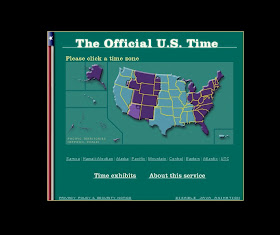
High schools are ruled by bells, or rather, a variety of tones still called "bells."
In many classes, students jump out of their seats at the sound of the bell, eager to accomplish the many tasks adolescents perform between classes--flossing their teeth, calisthenics, philosophical study--whatever it is that students do before they saunter into their next class 5 minutes later.
In other classes, such as mine, students sit until they get their Pavlovian clue (Mondays through Thursdays--"have a great day" and on Friday, "What do we practice?" Safe Science!)
I have an ancient analog clock in my classroom, just a few feet from, the digital school-issued one. My clock has a second hand. I can tell when the bell is going to ring. I often count down.
Like many older clocks, my clock has not been scrubbed of error. A few seconds off each day adds up over weeks and months. No big deal, there's a little knob in the back for correction.
The state-prescribed science curriculum is sometimes boring (*gasp*), and I've gotten pretty good at spotting texting, so my clock becomes, at times, an object of inordinate interest.
Once a child becomes familiar with the second hand, the interminably long last minute becomes slightly less so.
The second hand creeps to the appointed dismissal moment--and nothing happens. The bell rings a few seconds later than expected.
"Hey, the school clock is wrong!"
And we are now set for a lesson in relativity.
The school clock, being the arbiter of school time, cannot be wrong. And I know my old clock has picked up a step or two over its digital cousin.
The school clock cannot be modified by me--somewhere in administration someone has the task of keeping time, but given computers and quartz, it might be decades before anyone has to make an adjustment.
I frequently adjust mine, even when it's fine. Just enough to make the second hand change in relation to the school bells.
Evil? Not sure. Sneaky? You bet. But my kids are watching it, and commenting, and thinking. They inadvertently form hypotheses, most of which assume my clock is as accurate as the NIST official US time.
Some days I spend 47 minutes teaching pseudoscience, teaching vocabulary or models as gospel. During the last minute, the kids get the real science, watching an ancient clock's wobbly second hand tick towards their predictions for the bell. I listen to the side conversations but do not interrupt.
"Geez, the bell was early! Dr. D, how come the school can't get its clocks straight?"
I shrug. They'll figure it out sooner or later.
No comments:
Post a Comment